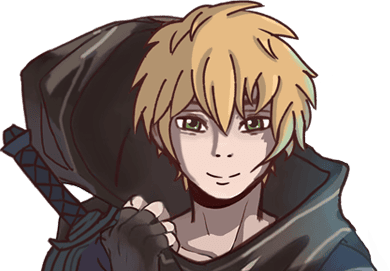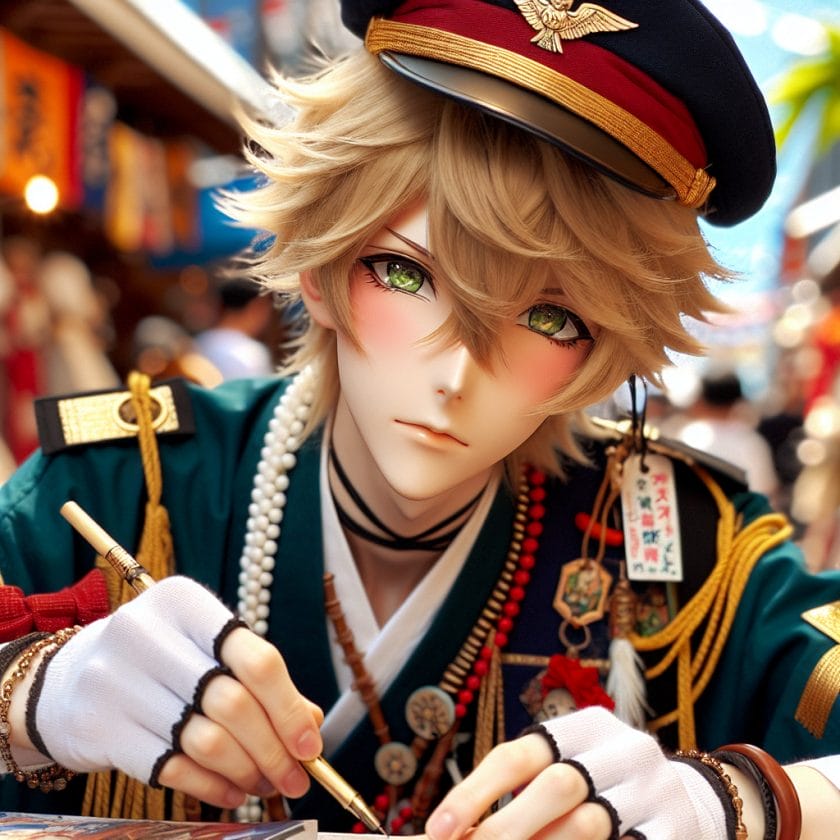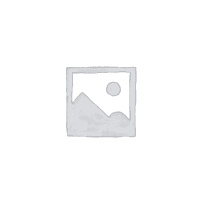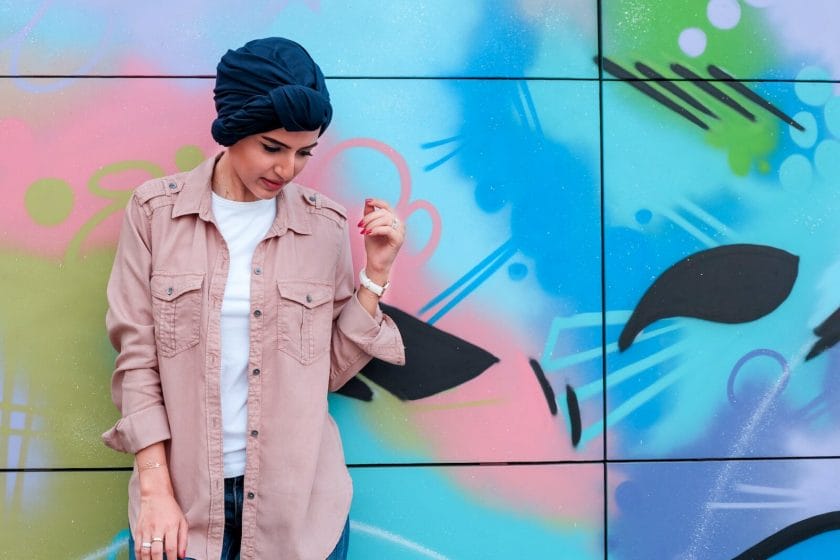[publishpress_authors_box layout="ppma_boxes_840322"]
https://images-wixmp-ed30a86b8c4ca887773594c2.wixmp.com/f/4faccd33-a90a-495f-96b2-7379a90ff0d8/d2b3ch4-ee518bb1-5e8b-426d-834c-c6ded90db561.jpg?token=eyJ0eXAiOiJKV1QiLCJhbGciOiJIUzI1NiJ9.eyJzdWIiOiJ1cm46YXBwOjdlMGQxODg5ODIyNjQzNzNhNWYwZDQxNWVhMGQyNmUwIiwiaXNzIjoidXJuOmFwcDo3ZTBkMTg4OTgyMjY0MzczYTVmMGQ0MTVlYTBkMjZlMCIsIm9iaiI6W1t7InBhdGgiOiJcL2ZcLzRmYWNjZDMzLWE5MGEtNDk1Zi05NmIyLTczNzlhOTBmZjBkOFwvZDJiM2NoNC1lZTUxOGJiMS01ZThiLTQyNmQtODM0Yy1jNmRlZDkwZGI1NjEuanBnIn1dXSwiYXVkIjpbInVybjpzZXJ2aWNlOmZpbGUuZG93bmxvYWQiXX0.83qbnrcTBTQeDvlKfOjSzLhK3uNSatHYyfygh66Ctj8
1. The Basic Materials Needed to Draw a Furry Character
When it comes to drawing a furry character, you don’t need any fancy or specialized materials. In fact, you can create amazing furry artwork with just a few basic supplies:
- Pencil: A good quality pencil is essential for sketching out the initial outline of your furry character. Opt for a mechanical pencil or a set of drawing pencils with different lead hardness options.
- Paper: Choose a smooth and sturdy paper that can handle different drawing techniques, such as bristol board or drawing paper. It’s always helpful to have multiple sheets on hand in case you want to practice or make adjustments.
- Eraser: Mistakes happen, especially when sketching. Make sure you have a good eraser that can cleanly remove unwanted lines without damaging the paper.
- Inking pens: If you want to add bold and defined lines to your furry character, consider using inking pens. Look for pens with various tip sizes to achieve different line weights.
- Coloring tools: Depending on your preference, you can use colored pencils, markers, watercolors, or digital software to add color and bring your furry character to life.
Tips:
– Experiment with different materials and find what works best for you. Every artist has their own preferences and techniques.
– Don’t be afraid to try new things! Explore different mediums and see how they can enhance your furry artwork.
– Practice regularly to improve your skills and become familiar with the tools you’re using.
– Remember that art is about having fun and expressing yourself, so don’t get too caught up in having the “perfect” materials.
Recommended Materials:
- Mechanical pencil (0.5mm)
- Bristol board or drawing paper
- Kneaded eraser
- Black inking pens (varying tip sizes)
- Colored pencils or markers
2. Starting Sketching the Outline of a Furry Character
Understanding the Anatomy of Furries
When starting to sketch the outline of a furry character, it’s important to have a basic understanding of their anatomy. Furries typically have anthropomorphic features, combining human and animal characteristics. Pay attention to proportions, such as elongated limbs or exaggerated facial features, which can vary depending on the species you are drawing.
Tips for Sketching the Outline
– Begin by lightly sketching basic shapes to establish the overall pose and posture of your furry character.
– Use simple lines and circles to represent major body parts like the head, torso, arms, and legs.
– Experiment with different poses and angles to bring life and dynamism to your character.
– Don’t be afraid to make adjustments as you go along. Sketching is a process of exploration and refinement.
3. Proportions and Guidelines for Drawing Furries
Understanding Proportions in Anthropomorphic Characters
Drawing furries requires understanding how their proportions differ from humans or animals. While there are no strict rules, certain guidelines can help create visually pleasing characters. For example, many furries have longer legs compared to their torso length, giving them a more agile appearance.
Tips for Maintaining Proportions
– Study references of both animals and humans to understand how they combine in anthropomorphic characters.
– Pay attention to limb length ratios and body proportions specific to different species.
– Experiment with exaggerating certain features while keeping others relatively realistic for a unique look.
– Practice drawing various poses and angles to develop a sense of proportion in different situations.
(Note: Please note that “furries” can refer both to anthropomorphic animals within fandom communities as well as individuals who enjoy dressing up as animal characters. This response focuses on drawing anthropomorphic characters within an artistic context.)
4. Techniques for Adding Fur Texture and Details to Your Furry Character
Creating Realistic Fur
One technique for adding fur texture and details to your furry character is by using various brush strokes to mimic the appearance of fur. Experiment with different brush sizes and textures to create a realistic look. Start by blocking in the general shape of the fur with larger brush strokes, then gradually add smaller strokes to define individual strands of fur. Pay attention to the direction of the fur and use lighter and darker shades to create depth.
Adding Highlights and Shadows
To make your furry character’s fur appear more three-dimensional, it’s important to incorporate highlights and shadows. Use a lighter shade for the areas where light hits the fur directly, such as the top of the head or along the back. Conversely, use a darker shade for areas that are in shadow or have less direct light, such as under the chin or behind the ears. This will help give your character’s fur depth and dimension.
Tips:
- Study reference images of real animals with similar fur patterns to understand how light interacts with their fur.
- Experiment with different brush settings, such as opacity and flow, to achieve desired texture.
- Consider using layer masks or blending modes to refine your fur texture.
5. Depicting Facial Expressions on a Furry Character
Depicting facial expressions on a furry character can bring them to life and convey emotions effectively. Here are some techniques you can use:
Paying Attention to Anatomy
To accurately depict facial expressions on your furry character, it’s important to understand their underlying anatomy. Study human facial expressions and how different muscles move to convey specific emotions. Apply this knowledge to your furry character by adapting the expressions to fit their unique facial structure.
Emphasizing the Eyes
The eyes are often considered the windows to the soul, and they play a crucial role in conveying emotions. Focus on capturing the expression in your furry character’s eyes by paying attention to details such as shape, size, and positioning. Experiment with different eye shapes and pupil sizes to evoke different moods.
Tips:
- Practice drawing various facial expressions on a blank template before applying them to your furry character.
- Use reference images or mirror observations to understand how certain expressions affect different parts of the face.
- Experiment with eyebrow placement and shape to further enhance your furry character’s expressions.
6. Choosing Colors for Your Furry Character’s Fur
Understanding Color Theory
When choosing colors for your furry character’s fur, it is important to have a basic understanding of color theory. Colors can evoke certain emotions and convey different meanings, so consider the personality and traits of your character when selecting colors. For example, warm colors like red and orange can represent energy and passion, while cool colors like blue and green can signify calmness or tranquility.
Tips for Color Selection
1. Consider the environment: Think about the natural habitat or surroundings of your furry character. Choose colors that would help them blend in or stand out in their environment.
2. Use complementary colors: Complementary colors are opposite each other on the color wheel, such as blue and orange or purple and yellow. Using these combinations can create visual interest and make your character’s fur pop.
3. Experiment with shades and tones: Play around with different shades and tones of a particular color to add depth to your character’s fur. This can be achieved by adding highlights or shadows.
Examples:
– A fox furry character living in a forest could have a combination of earthy tones like brown, orange, and green to blend in with its surroundings.
– A dragon furry character with a fiery personality could have vibrant red scales with hints of yellow or orange for added intensity.
Overall, choosing colors for your furry character’s fur should be a creative process that reflects their personality, environment, and desired impact.
7. Common Mistakes Beginners Make When Drawing Furries and How to Avoid Them
Lack of Reference Images
One common mistake beginners make when drawing furries is not using reference images as a guide. Reference images provide valuable information about anatomy, proportions, poses, and textures that can greatly improve the accuracy and realism of your artwork. Whether it’s studying photos of real animals or looking at other artists’ work, referencing is essential for learning and developing your skills.
Tips for Using Reference Images:
– Collect a variety of reference images: Gather references that showcase different angles, poses, and expressions to expand your visual library.
– Study anatomy: Pay attention to how muscles, bones, and fur are structured in real animals. This will help you understand how to depict them accurately in your furry characters.
– Analyze textures: Observe the texture of different types of fur and try to replicate it in your drawings. Reference images can provide valuable insights into the patterns and details that make fur look realistic.
Inconsistent Proportions
Another common mistake beginners make is inconsistent proportions when drawing furries. It’s important to maintain proper proportions throughout your artwork to ensure a balanced and visually appealing result. Inconsistencies in proportions can make the character appear distorted or unnatural.
Tips for Maintaining Proportions:
– Use guidelines: Sketch out basic shapes and lines as guidelines before adding details. This will help you establish the correct proportions from the start.
– Compare sizes: Compare different parts of the body with each other to ensure they are proportionate. For example, compare the size of the head with the body or the length of limbs with each other.
– Practice gesture drawing: Gesture drawing involves capturing the essence and movement of a subject quickly. Practicing this technique can improve your ability to capture accurate proportions.
By utilizing reference images and paying attention to consistent proportions, beginners can avoid these common mistakes and create more successful furry character drawings.
8. Tips for Creating Unique and Original Designs for a Furry Character
Research Existing Characters:
Before diving into creating your own furry character, it’s important to research existing characters in order to understand what has already been done and avoid creating something too similar. Look at popular furry characters from various media such as movies, TV shows, and video games. Take note of their unique features, color palettes, and overall design. This will help you come up with fresh ideas and ensure your character stands out.
Combine Different Animal Traits:
One way to create a unique furry character is by combining different traits from various animals. Consider mixing characteristics from different species such as the ears of a cat, the tail of a fox, or the wings of a bird. Experimenting with these combinations can lead to interesting and original designs that capture the essence of your character.
Experiment with Colors:
Color plays a crucial role in making your furry character visually appealing and distinct. Instead of sticking to traditional animal colors, try experimenting with unusual or vibrant color schemes. Consider using contrasting colors or gradients to add depth and visual interest to your character’s fur. Don’t be afraid to think outside the box when it comes to color choices.
- Research existing furry characters
- Combine different animal traits
- Experiment with colors
9. Adding Depth and Dimension to Your Furry Character through Shading and Highlights
Adding shading and highlights can greatly enhance the three-dimensional appearance of your furry character’s design. Here are some tips on how to achieve this:
Understanding Light Sources:
Before adding shading and highlights, it’s important to understand where your light source is coming from. This will determine where shadows fall on your character and where highlights should be placed. Consider the direction and intensity of the light source to create realistic lighting effects.
Layering Shading:
Start by adding base shading to your character’s fur using a darker shade of their main color. Gradually build up layers of shading in areas where shadows would naturally occur, such as under the chin, between limbs, or around facial features. Use lighter strokes for areas that receive more direct light.
Adding Highlights:
To add dimension and shine to your furry character’s fur, selectively apply highlights using a lighter shade of their main color. Concentrate on areas that catch the most light, such as the tips of fur strands or areas directly facing the light source. This will create a sense of depth and realism in your artwork.
- Understand light sources
- Layer shading
- Add highlights
10. Poses and Actions that Work Well for Drawing Furries
When drawing furries, it’s important to consider poses and actions that showcase their unique characteristics and bring out their personality. Here are some suggestions:
Capturing Agility:
Furries often possess traits associated with agility, so incorporating dynamic poses can emphasize this aspect. Draw them in mid-air while leaping or running, with limbs extended and fur flowing in motion. Experiment with different action poses to convey energy and liveliness.
Showcasing Expressions:
Furries can express emotions through facial expressions just like humans do. Focus on capturing their unique features such as snouts, ears, or tails to convey specific emotions effectively. Play around with exaggerated expressions to enhance the character’s personality.
Incorporating Animalistic Behaviors:
Consider incorporating animalistic behaviors into your furry character’s poses. Show them grooming themselves, hunting, or engaging in playful activities. This not only adds realism but also creates a deeper connection between the character and their animal nature.
- Capture agility
- Showcase expressions
- Incorporate animalistic behaviors
11. Incorporating Clothing or Accessories into Your Furry Character’s Design
Adding clothing or accessories to your furry character can help define their personality, occupation, or role within a story. Here are some tips for incorporating these elements effectively:
Consider Character Traits:
Think about your furry character’s traits and backstory when choosing clothing or accessories. Are they adventurous? Intellectual? Elegant? Select items that align with their personality and enhance their overall design.
Match Colors and Styles:
Ensure that the colors and styles of the clothing or accessories complement your furry character’s fur color and design. Consider using similar color palettes or patterns to create a cohesive look. Experiment with different styles such as modern, fantasy, or historical to find the one that suits your character best.
Pay Attention to Proportions:
When drawing clothing on a furry character, pay attention to how it fits their body shape and proportions. Take into account any unique features like tails or wings that may affect how the clothing drapes or interacts with the character’s anatomy.
- Consider character traits
- Match colors and styles
- Pay attention to proportions
12. Popular Software and Digital Tools Used by Artists for Drawing Furries
Digital art offers various tools and software options that can make drawing furries easier and more efficient. Here are some popular choices among artists:
Digital Drawing Tablets:
Investing in a digital drawing tablet can greatly enhance your furry character drawing experience. Tablets like Wacom Intuos or Huion Kamvas provide pressure sensitivity and precise control, allowing for more natural and detailed artwork.
Graphic Design Software:
Software such as Adobe Photoshop, Clip Studio Paint, or Procreate offer a wide range of tools and features specifically designed for digital art. These programs allow you to create and manipulate layers, apply various brushes, and experiment with different effects to bring your furry characters to life.
3D Modeling Software:
Some artists prefer using 3D modeling software like Blender or ZBrush to create a base model of their furry character. This can be helpful for achieving accurate proportions and complex poses before adding details through digital painting.
- Digital drawing tablets
- Graphic design software
- 3D modeling software
13. Recommended Resources or Tutorials for Step-by-Step Guidance on Drawing Furries
If you’re looking for step-by-step guidance on drawing furries, there are several resources available that can help improve your skills. Here are some recommended options:
Online Tutorial Websites:
Websites like DeviantArt, FurAffinity, or ArtStation often have tutorials created by experienced artists that cover various aspects of drawing furries. These tutorials typically include detailed instructions, visual references, and tips on techniques specific to furry art.
Drawing Books:
There are numerous books dedicated to teaching the art of drawing furries. Look for titles such as “Draw Furries” by Jared Hodges and Lindsay Cibos or “Furry Fandom: How to Draw Furries” by Emily Suh. These books provide step-by-step instructions along with examples to help you master furry character drawing.
YouTube Channels:
YouTube is a treasure trove of tutorial videos on furry character drawing. Channels like “Furries: How to Draw” or “Furry Art Academy” offer in-depth tutorials, speedpaints, and tips from experienced artists. Watching the process can be especially helpful for visual learners.
- Online tutorial websites
- Drawing books
- YouTube channels
14. Tips for Drawing Different Species of Animals as Furries (Wolves, Foxes, Dragons, etc.)
Drawing different species of animals as furries requires understanding their unique characteristics and adapting them to a humanoid form. Here are some tips for drawing specific animal species as furries:
Wolves:
When drawing wolf furries, pay attention to their distinctive facial features such as elongated snouts and sharp ears. Emphasize their strong and muscular body structure while incorporating wolf-like fur patterns and colors.
Foxes:
For fox furries, focus on capturing their elegant and agile nature. Highlight their bushy tails, triangular ears, and slender body shape. Experiment with various color combinations to depict different fox species accurately.
Dragons:
Drawing dragon furries allows for more creative freedom. Incorporate reptilian features such as scales, horns, wings, or tail spikes into your design. Consider the size and anatomy of dragons when depicting them in humanoid form.
- Tips for drawing wolf furries
- Tips for drawing fox furries
- Tips for drawing dragon furries
In conclusion, learning how to draw a furry can be an exciting and creative journey. By following the steps and practicing regularly, you’ll be able to bring your furry characters to life on paper. Remember to have fun and let your imagination run wild! If you’re interested in taking your love for furries further, don’t forget to check out our cosplay services. We’d love to help you bring your furry creations into the real world. Happy drawing and happy cosplaying!
https://images-wixmp-ed30a86b8c4ca887773594c2.wixmp.com/f/e6e346ee-cd96-4f82-86bd-439b382167b2/dbxhwbf-9d78890c-65d2-4126-b355-15209ad9724c.png/v1/fill/w_1024,h_1342,q_80,strp/4_step_muzzle_tutorial__zavlekat_by_zavlekat_dbxhwbf-fullview.jpg?token=eyJ0eXAiOiJKV1QiLCJhbGciOiJIUzI1NiJ9.eyJzdWIiOiJ1cm46YXBwOjdlMGQxODg5ODIyNjQzNzNhNWYwZDQxNWVhMGQyNmUwIiwiaXNzIjoidXJuOmFwcDo3ZTBkMTg4OTgyMjY0MzczYTVmMGQ0MTVlYTBkMjZlMCIsIm9iaiI6W1t7ImhlaWdodCI6Ijw9MTM0MiIsInBhdGgiOiJcL2ZcL2U2ZTM0NmVlLWNkOTYtNGY4Mi04NmJkLTQzOWIzODIxNjdiMlwvZGJ4aHdiZi05ZDc4ODkwYy02NWQyLTQxMjYtYjM1NS0xNTIwOWFkOTcyNGMucG5nIiwid2lkdGgiOiI8PTEwMjQifV1dLCJhdWQiOlsidXJuOnNlcnZpY2U6aW1hZ2Uub3BlcmF0aW9ucyJdfQ.u8q3O64MC_2K1UABcvyVMf8XXI4VQsAt7yNtH6XlqYc








